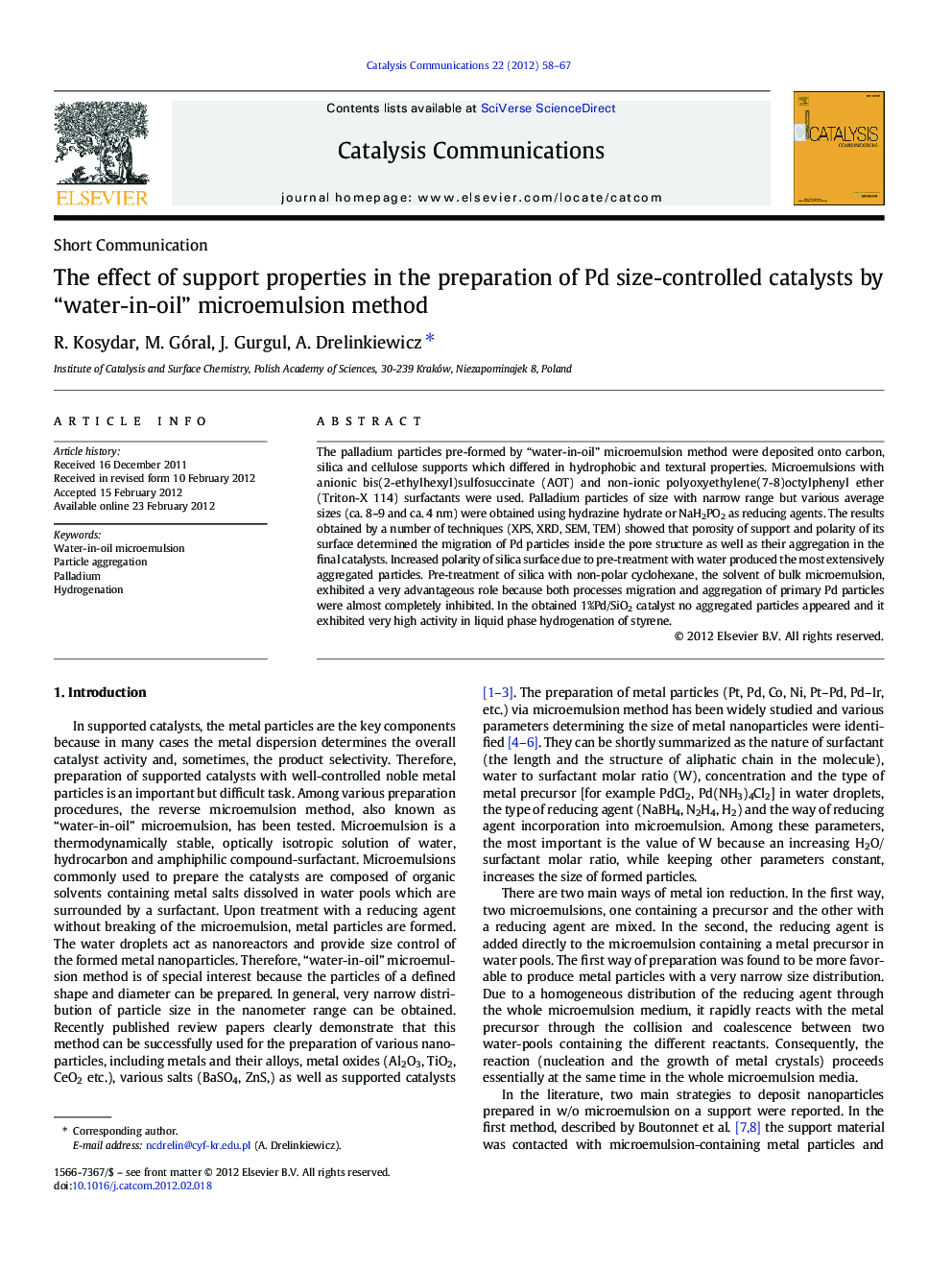| Article ID | Journal | Published Year | Pages | File Type |
|---|---|---|---|---|
| 51380 | Catalysis Communications | 2012 | 10 Pages |
The palladium particles pre-formed by “water-in-oil” microemulsion method were deposited onto carbon, silica and cellulose supports which differed in hydrophobic and textural properties. Microemulsions with anionic bis(2-ethylhexyl)sulfosuccinate (AOT) and non-ionic polyoxyethylene(7-8)octylphenyl ether (Triton-X 114) surfactants were used. Palladium particles of size with narrow range but various average sizes (ca. 8–9 and ca. 4 nm) were obtained using hydrazine hydrate or NaH2PO2 as reducing agents. The results obtained by a number of techniques (XPS, XRD, SEM, TEM) showed that porosity of support and polarity of its surface determined the migration of Pd particles inside the pore structure as well as their aggregation in the final catalysts. Increased polarity of silica surface due to pre-treatment with water produced the most extensively aggregated particles. Pre-treatment of silica with non-polar cyclohexane, the solvent of bulk microemulsion, exhibited a very advantageous role because both processes migration and aggregation of primary Pd particles were almost completely inhibited. In the obtained 1%Pd/SiO2 catalyst no aggregated particles appeared and it exhibited very high activity in liquid phase hydrogenation of styrene.
Graphical abstractThe role of support properties; porosity, chemical nature, and hydrophobicity, in the preparation of Pd size-controlled catalysts by means of water-in-oil microemulsion methodFigure optionsDownload full-size imageDownload as PowerPoint slideResearch Highlights► Preparation of palladium catalysts by means of “water-in-oil” microemulsion method. ► A role of support properties in palladium dispersion. ► Palladium penetration and primary particle aggregation.
